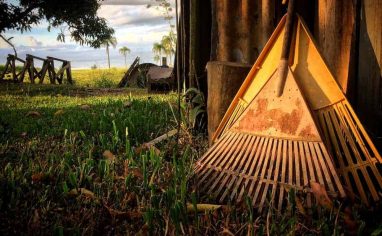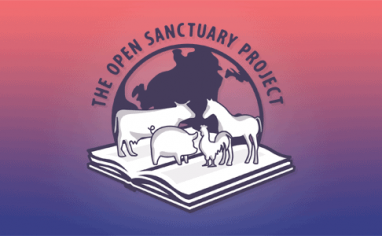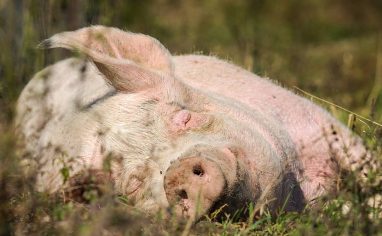
Subscribe To The Open Sanctuary Podcast
If you’d like to get the latest episodes of The Open Sanctuary Podcast, you can subscribe for free on all Podcast platforms, including Apple Podcasts and Spotify!
Episode Notes
Community Education Specialist Andie and NonprofitA non-governmental organization whose primary purpose is something other than selling goods or services. Specialist Julia discuss zoning laws and their importance to animal sanctuary and rescue work! We’ve done a few podcast episodes about capacity variables, and zoning is often touched upon. While zoning may not be the first thing you think about in terms of capacity limits, it’s critical for you to understand the zoning laws governing your property’s land. Zoning can impact the number and type of residents you can have, how many buildings you can have and where you put them, whether or how you can hold large events, and many other factors! Listen on to learn more!
—
This Episode’s Referenced Open Sanctuary Project Resources:
- Understanding Your Animal Sanctuary’s Zoning Rights & Restrictions | The Open Sanctuary Project
- A Forever Home? Adoption Program Considerations For Animal Sanctuaries | The Open Sanctuary Project
- What Is A Land Survey And How Can It Help Your Animal Organization? | The Open Sanctuary Project
Episode Transcript (Auto-GeneratedThe following content was transcribed through an automated process and may contain transcription errors or misspellings.)
Andie Springirth: Welcome to another episode of the Open Sanctuary Podcast. I’m Andie, and today I am chatting with my dear friend and colleague Julia. We’ve done a few podcasts on the question of capacity, and one thread that keeps coming up in those discussions is the question of zoning. Now zoning may not be the first thing you think about when it comes to a capacity factor. But whether you’re in the planning phases for creating the animal sanctuary of your dreams or have a number of residents already and are looking to expand, it’s really critical for you to understand the zoning laws governing your property’s land. So, to start out, I’d like to ask Julia if she could share a little bit about what zoning laws are and why they are a thing.
Julia Magnus: Yeah, they’re definitely a thing. So, in essence, the way that they work, zoning laws divide a specific legal jurisdiction, whether it’s a city, a county, or some other form of local governance into districts or zones. And then these laws limit how land in each zone can be used. So, there are a lot of justifications for why these kinds of laws are necessary, which largely boil down to a legal concept, the question of nuisance. Sounds very legal, right? Nuisance is basically the backbone and historical ground of environmental law. For example, in an urban environment, zoning laws have been used to restrict land use in a way that had effects on people as well as land uses. They have been used for segregating races and classes. In other areas, zoning has been used to separate industrial uses from spaces where people live so that the people living in these residential areas can avoid things like pollution-related concerns, unwanted smells or noises, etc., which are all considered nuisances. And most relevant to sanctuaries and rescues, zoning can be used to restrict what are traditionally considered to be agricultural land uses to specific areas so that the impacts of those kinds of uses are limited geographically and do not impact the people who do not want to deal with the nuisances associated with them.
Andie Springirth: That was an incredibly clear explanation of what zoning is, Julia. Thank you so much. And I’m wondering what makes figuring out zoning so tricky.
Julia Magnus: Okay, so zoning laws can be vastly different not only in different parts of the United States, but even between two adjacent communities. Let’s just use the example of my town, Chicago. In the city limits of Chicago, you are allowed to have roosters, for example. You can have any farmed animalsA species or specific breed of animal that is raised by humans for the use of their bodies or what comes from their bodies. you’d like to have in the city of Chicago without restriction. However, move one county over to DuPage, and roosters are largely banned in most of the county except for certain areas that are unincorporated. So, even in the next town over from Chicago, Evanston, the laws are totally different, and there are restrictions. Roosters are banned there, and you can have six hens, but you need to get permits for those. So, it’s really like you step over whatever the invisible line happens to be, and things can be wildly different. But if you do your research and ask the appropriate questions, you can be empowered to know what you can and cannot legally do on your property. You can make informed decisions so that you avoid expensive legal challenges or citations down the road. And keep in mind, we’ll get to this a little bit more later, but whether or not your zoning allows for farmed animals is not the only issue that zoning can impact. There are a diverse series of issues pertinent to sanctuaries that zoning regulations may cover in your area. Speaking of doing your research, I’m thinking that a lot of our listeners are going to be wondering how we can figure out what zoning regulations are applicable to their specific situations. I’m going to give my famous catchphrase: please consult with a qualified attorney in your jurisdiction because of the important implications of zoning for you and your residence. Please, when you’re doing research into the zoning of a particular property, like you’re considering it as a place for your sanctuary to find a home, please engage an experienced and knowledgeable attorney in that jurisdiction who will be familiar with those laws. So, in addition to that, if you’re doing like preliminary research, you can, depending on what the community is that you’re looking at, find out about zoning restrictions by reaching out to the local town hall, city hall, or county seat, or all of these places because sometimes there are overlapping regulations, which makes things even more complicated. But typically, someone who’s involved with local or regional government can help you learn what zoning restrictions might be in place or help connect you to the department that has that information via a simple phone call. Don’t just go on the internet. Don’t just do the Google. Definitely seek out this information personally from the appropriate authorities versus relying on word of mouth from others. Statements from realtors, beware. Realtors want to sell you a property. They want to sell it to you badly. And so they may not know, first of all, what the laws are, but they also probably want to cast the property in a light that’s favorable to a sale. So don’t rely on them strictly. Also, let’s just say the consequences of not doing this research are pretty significant. Animal caregivers often contact animal sanctuaries when they’re suddenly confronted by neighbors who might have an issue with their animal residents, or they might have come across zoning problems of their own. And caregivers who aren’t in compliance with zoning may then be required to find alternate homes for residents. So, you can avoid all this by personally consulting with relevant authorities well in advance of welcoming residents. And it helps as well. Yes, do the phone call, but it can also help to ask for confirmation of the allowances for the property you’re looking at in writing. Also, consider it like the inverse situation, right? Consider that if your organization has an adoption program and you’re adopting out a resident to a prospective caregiverSomeone who provides daily care, specifically for animal residents at an animal sanctuary, shelter, or rescue., part of your vetting process should definitely be double-checking the prospective adopter’s zoning. We mention this somewhat in our adoption resource, and we also recently did a podcast on adoption. This should be one of your first steps in vetting adopters because the adopter just might not be aware of all the rules applicable to their property, and you don’t want to risk going through an entire adoption process and vetting and, God forbid, find out that the animal that you’re adopting out or want to adopt out is not allowed on that property. And then finally, you can also engage a surveyor who can note additional restrictions that might impact your property. We also have a resource on land surveys; we’ll include that in the show notes for you so you can take a look at that.
Andie Springirth: There is a lot to consider, and this is incredibly helpful. So, thank you again for all of this guidance. So, why don’t we take a look at some of the different types of zones that folks might encounter and that might come into play and impact sanctuary operations on their properties? Right off the bat when you said not only animals, I was also thinking of, and I don’t know if you’re going to mention this in this episode, but I was also thinking from an education and outreachAn activity or campaign to share information with the public or a specific group. Typically used in reference to an organization’s efforts to share their mission. perspective as zoning and how that would impact events, facilitating events, and hosting events. So, that was one thing I was wondering if that’s what you’re referring to.
Julia Magnus: Yeah, you’re so spot on. That’s 100% a thing that can be impacted by zoning. And I’m so glad you mentioned that. So, when you’re looking at zones, most typically you’ll see zones divided into categories like residential, rural, industrial, commercial, historic, or maybe a combination of any of the above. And you might imagine, unsurprisingly, that in a residential zone, one thing that folks might want to restrict are large events regularly held. Neighbors might have feelings about that, right? So, as you might imagine, these residential areas are typically the most restrictive when it comes to the kinds of uses that sanctuaries might want to engage in. Although, again, that’s not always true. As I said, in the city of Chicago, you can have whatever farmed animals you want without restriction in the city. Another thing you might see when you’re doing research into zoning is something called spot zoning, which is where a very small area is given a different zoning designation than the areas surrounding it. That might come into play if you’re dealing with historical property or something like that. There’s also contract zoning where a landowner might be allowed to rezone portions of their land given that agreed upon restrictions are met. If you take a look at our resource on zoning, there is a breakdown on what kind of restrictions you might encounter in each of these zones.
Andie Springirth: Thank you. And what specific kinds of restrictions should folks be looking at when they’re looking at zoning regulations?
Julia Magnus: So, probably the first one are restrictions that would regulate the types and numbers of animals that can be on a certain property. This could look like a rooster ban, for example. You might see things that limit you to a certain number of animals per acre. You might even see restrictions, which are odd, that limit the amount of animals by the total combined weight of the animals. This is a side note on this; it’s kind of a sad side note. You may also find restrictions that if a resident has passed away, you may not be able to, for example, bury that resident on that property. Zoning can impact that for sure. Other zoning restrictions that you’ll want to keep your eye out for are restrictions that limit the type, number, and size of structures on the property. So, you’ll definitely have to keep those in mind as you build and expand your operation. You might have a house and a barn to start out with that exist on the property when you purchase it. But you might have plans to add an additional barn or to add a caregiver’s house. You might also see things like setbacks, which basically are almost like a border zone that are laid out around certain kinds of buildings or neighbors’ lot lines. And those might restrict where you can site certain kinds of buildings or land uses. I’ve seen them in areas surrounding Chicago. They’re restrictions like you cannot put a chicken coop within X amount of feet of a neighbor’s lot line or a compost pile, for example, and stuff like that. And then finally, the thing that you mentioned, Andy, and this is from an educational standpoint, important: if you plan to have events or you want to do programming, you might find restrictions on the number of human residents and visitors that can be on the property. It can impact how many caregivers can live on your property and whether you can hold large events. So, you definitely want to check that out because you don’t want to find out about these restrictions after the fact when a neighbor complains in the middle of a large fundraising event. Yeah, we’ve all heard the stories. Like I live on the Montgomery County Agricultural Reserve in Maryland, and just to go back to an example you gave earlier, there were some significant zoning restrictions put in place in the late 80s to protect the aquifer that supplies the water to this area. And so it restricts a lot of things including building new structures like housing. So, prior to the late 1980s, if you owned the land, you could put a house anywhere you want. But now, with these new zoning laws in place, folks can only build a new house every 25 acres. So, yeah. So, that’s a significant restriction for some folks. Again, you got lots of different opinions on that, but helpful in terms of protecting the water source here. And I just wanted to mention that as a concrete example, too.
Julia Magnus: Yeah. No, that’s a huge one. And that’s such a great example of how zoning is intricately tied into environmental stuff as well as other kinds of issues. Wetlands and aquifer are great examples, but wetlands are another one. Wetlands are federally regulated under the Clean Water Act. So, you may find in areas that do have wetlands that those areas are entirely restricted from development. And so, you might be buying a property that looks like it has 50 acres, but if 25 of those are wetland, and there are setbacks that apply that limit development surrounding that 25 acres of wetland, you in reality may only have, maybe, 20 acres of that 50 for use. And you may have further restrictions, like if there’s compost or you’re removing waste from your residents’ enclosures, you might not be able to put that anywhere near those wetlands. And that’s for good reasons. But again, this is where being very aware of what your county has and has not restricted, and also having a surveyor on board to check out the property and look for these kinds of natural features, is wildly helpful. Yeah, I know of some sanctuaries, some who might even be listening who’d be like, “Wait, that’s us. That happened to us.” Where, you know, they either are looking at or may have even purchased a property with a couple of hundred acres, and only 50 of those acres are actually usable for residents, which is a third, right, of what they may have had in their plans or like you said in the beginning, their dream sanctuary that was in their mind. So, yeah, I just think it’s incredibly important to think about all of these things before you make a purchase like that and devise a plan.
Andie Springirth: Yeah. Yeah. And that’s why I think the zoning research has to look at the legal, which is what your lawyer can help you with after you kind of get a sense from the county. Your lawyer can get additional clarity. But the surveyor, you can even do tree surveys. So, your surveyor can go out there, mark where significant trees may be because you might even encounter that there are restrictions on cutting trees above a certain diameter or trees of certain kinds. So, there’s a lot to keep track of when you’re looking at purchasing a property or trying to understand your property better. And the lawyer and the surveyor are massively helpful tools with that.
Andie Springirth: Yeah. And I kind of answered this when I just gave my example above, but this is an important question that I’d love for you to answer for us and our listeners, and that’s can zoning laws change or be changed?
Julia Magnus: Yeah, absolutely. Zoning laws can be changed even after you’ve bought and settled on a piece of land. So, I actually remember there was a woman who I knew when I lived in the northern BBS. She had a property where historically she’d been able to keep as many chickens as she wanted. And unbeknownst to her, the zoning laws changed. Now, when that happens, typically anybody who’s impacted by that should be given public notice and also an opportunity to comment. It’s not something that typically just changes overnight without anyone knowing about it. But it did escape her notice, and then all of a sudden she was only allowed to have six chickens. It was a total mess. Now, during that process, it is possible that if you’re using the property up to the limits of what your zoning allows, your use might be grandfathered in; that’s a possibility. So, that change in zoning might not impact you. In other cases, you might need to petition governmental bodies for things like special use permits, variances, conditional use permits, or other forms of zoning relief to maintain your use of the land. And I would again encourage you very strongly that should you encounter this kind of situation, you consult closely with a qualified attorney experienced in land use law who is from your jurisdiction. And then let’s say you haven’t bought this land yet and you fall in love with it, but you’re finding that the zoning is pretty restrictive and might limit what your operation is going to look like. It is possible before you purchase it to approach local government and talk to them, like, is there anything that we can do that could change any of the zoning relief that I mentioned above, like a special use permit that would allow us to accommodate this proposed use that we have? If they say yes, you could apply for a special use permit or yes, you could apply for a variance, do not take that as a guarantee that you will get it because again, zoning changes due to their inherent ties with how land use impacts an entire community often requires public input. So, if suddenly you have the perfect piece of land, the zoning department’s like, “Okay, cool. We know you want to have more than what’s allowed. You can apply for a variance or something.” You might get neighbors who are like, “Wait, what?” And they will have the opportunity to comment and chime in, and that can absolutely impact and restrict you in ways that even if that possibility of variance exists, you might not get it because of the community around you. So, be careful. Be careful with that. This makes me think too here on the Montgomery County Agricultural Reserve. So that law I just mentioned that was put in place in the late 80s regarding not being able to build a house except every 25 acres. I would say within the last 15-20 years, residents on the Reserve have, a lot of them, not all of them of course, have been pushing for modifications to that law to enable folks to build ADUs, which for our audience means additional dwelling units. Some folks in common parlance. But it’s not that an ADU doesn’t necessarily mean it’s just like tacked onto a house; it can actually be a separate structure, but they have to be, depending where you are on the Reserve too, it changes how much square footage that ADU can be. So some places it’s like it can only be 800 square feet; other places it can be up to 1,200 square feet, which is basically a house in my opinion. So it’s very interesting though, and that’s a conversation here in Montgomery County that’s, I mean, it goes back and forth all the time because there’s a lot of people who are concerned a 1,200-foot ADU is essentially inviting in more families and a bigger impact on the aquifer and the land. So yeah, anyway, I knew your answer to that about zoning laws changing because they are constantly changing here, but I just think it’s very helpful for our audience to hear that as well.
Julia Magnus: Definitely. And I want to say too, as you mentioned, zoning seems so benign, right? It seems so, “Oh, here’s a code book. We follow the guy.” No, people get really worked up about this. Very, very worked up. And so, if you have a pretty activist community who are very committed to keeping things the way they are, or, you know, “not in my backyard,” it’s going to have an impact on you if you’re looking for any kind of zoning relief. And it’s good to be aware of that before you start trying to do things.
Andie Springirth: Yes, that bears repetition. Thank you so much, Julia. Yeah, that is incredibly important information for our sanctuary and rescue audience to have in hand. And so, friends, we hope that this discussion on zoning has been useful for you and maybe even a bit of fun. And as a friendly reminder for all of you, we’ve put a list of the resources that we’ve referred to in our show notes, and you can find them at www.opensanctuary.org. As always, we welcome your feedback. If you found this information valuable, please do consider leaving a five-star review for us. And if you have any additional feedback or ideas for subjects that you would like us to cover here, please feel free to reach out to us on our site as well. And if you like what we do and would like to continue to support our work, we always warmly welcome donations. We are a 501c3 organization, so all of those donations are tax-deductible, and they help us sustain our missionThe stated goals and activities of an organization. An animal sanctuary’s mission is commonly focused on objectives such as animal rescue and public advocacy. of providing freely accessible resources so that every sanctuary can be a success story. So, thank you so much for listening, friends, and for your support, and we look forward to talking to you next time.

Got A Podcast Idea? Contact Us!
If you have a topic or question you’d love to hear our staff address on The Open Sanctuary Podcast, please get in touch via our contact form!








